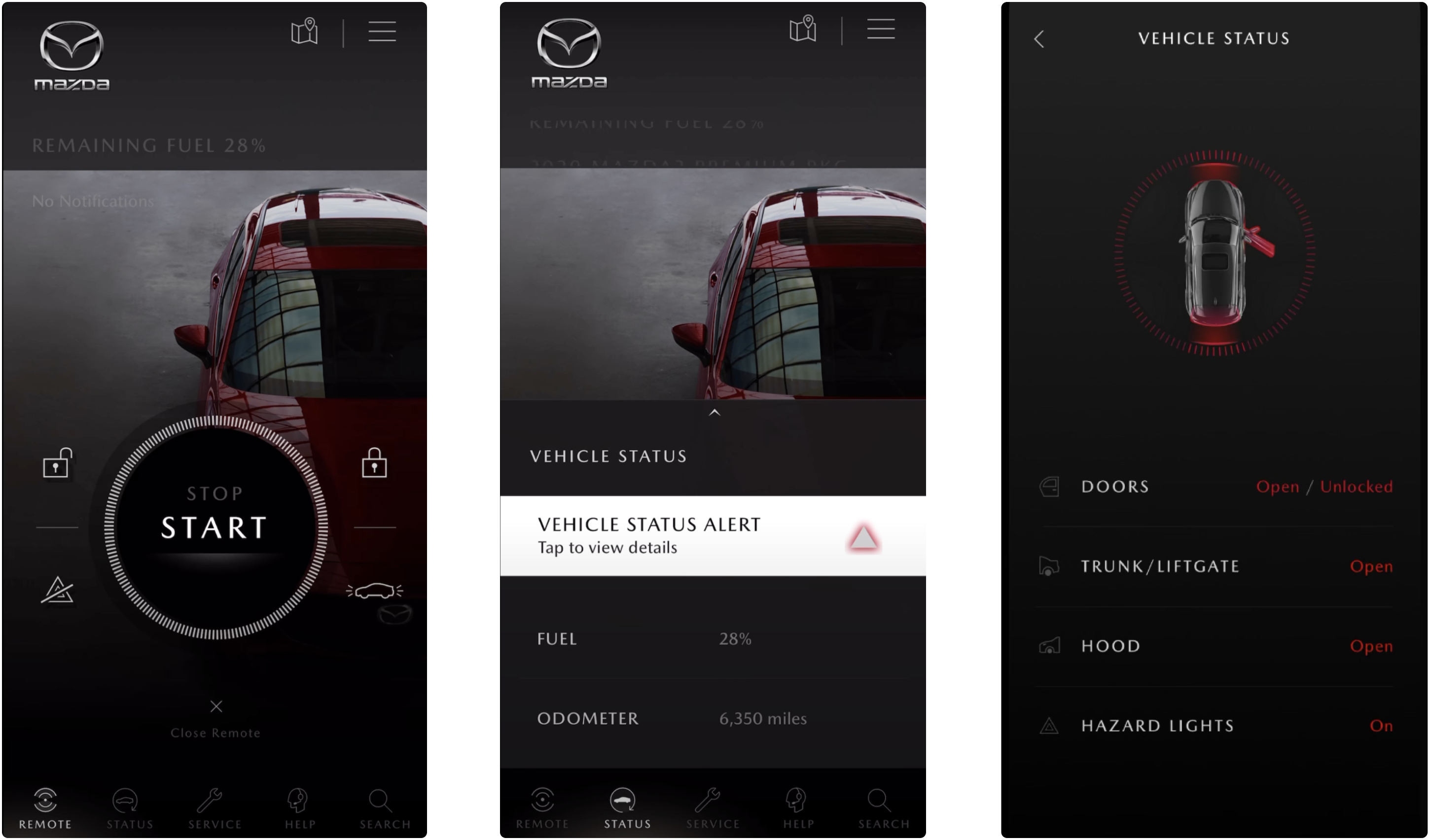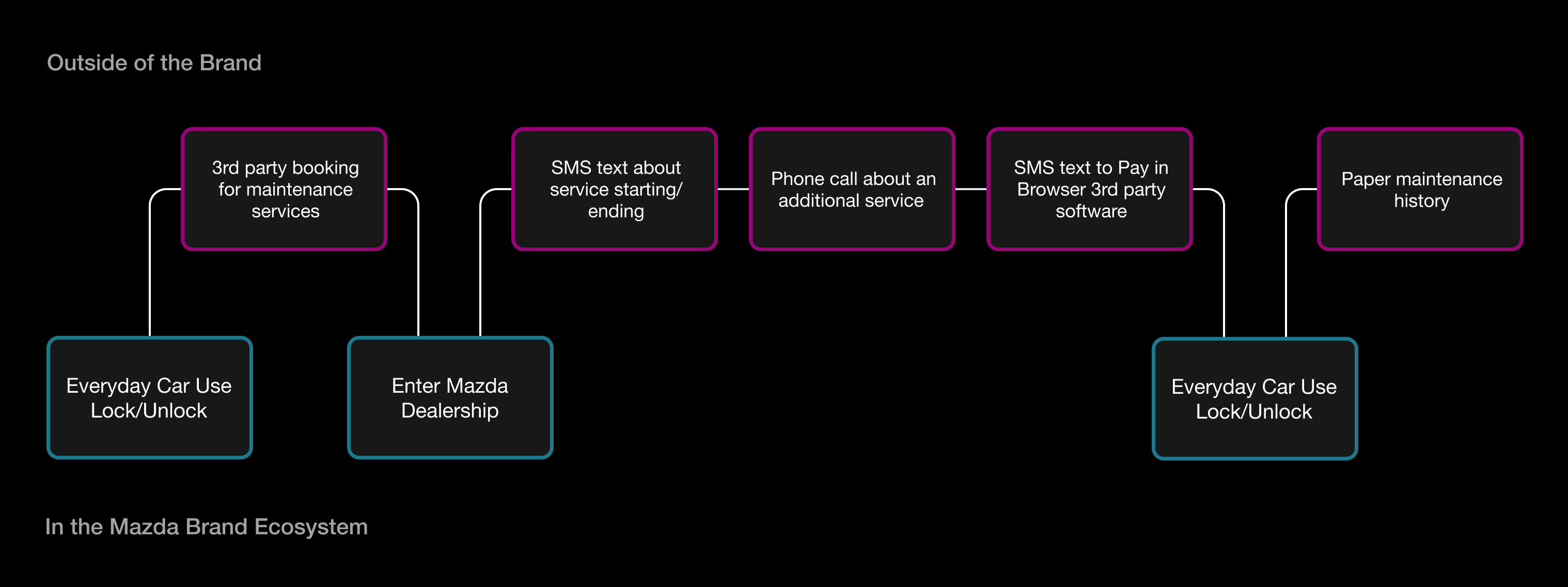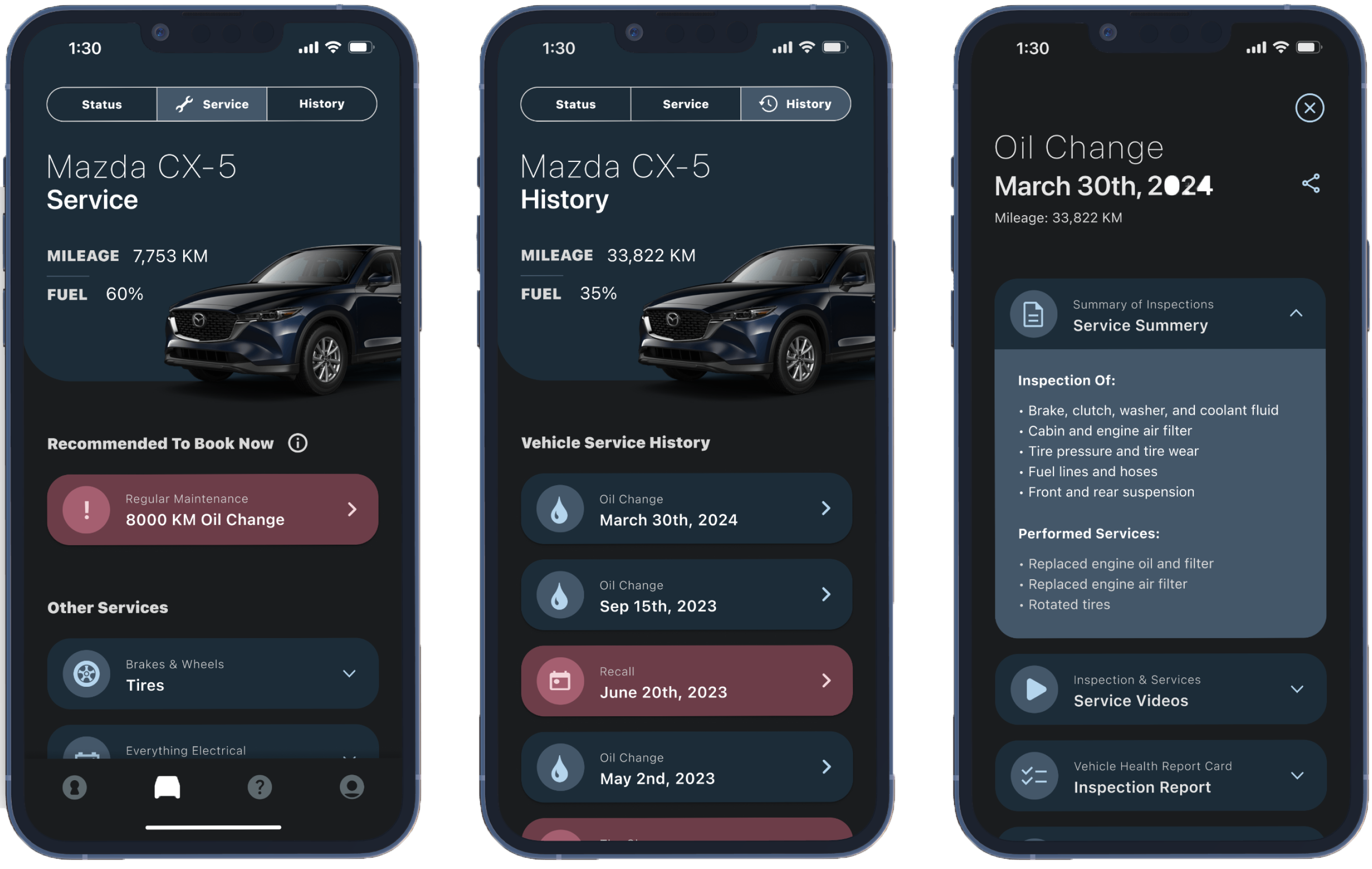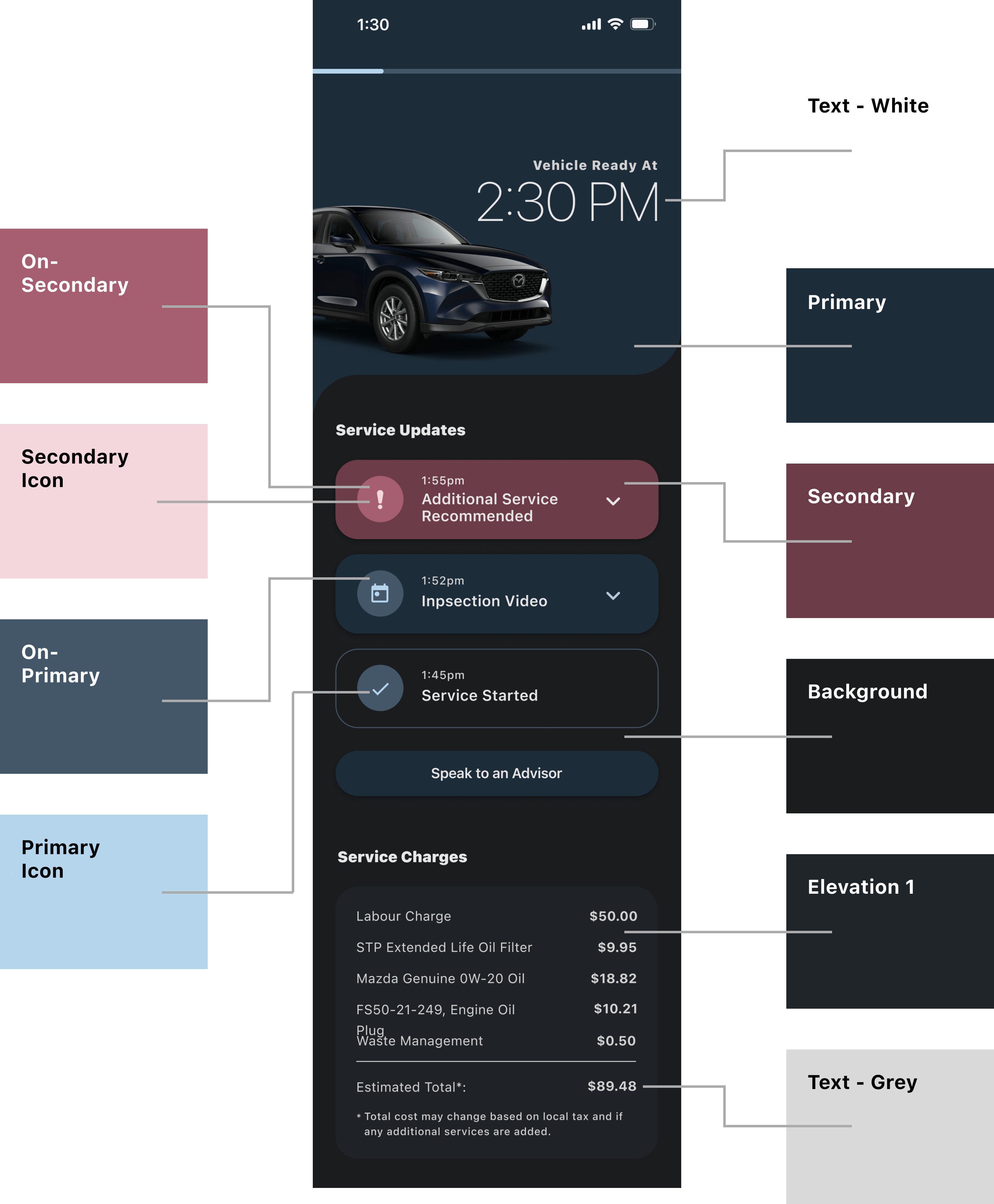Mazda Dealerships
Experience Design / Fall 2023
Project Overview
In this project, we were tasked to identify and solve a real-world implication of an experience design problem. We chose to study Mazda Dealerships. Here, we leveraged the touch points of the MyMazda application to create a thoughtful experience for both the business and its end-users.
My Contributions
In this project, my contributions consisted of sector-wide research, copywriting, post-production, and UI design.
Team
- Sina Omidallah
- Tyler Barlow
- Chinmayee Kusnur
Timeline
5 weeks
The Problem
Our primary research uncovered that dealerships (general) receive 50% of their revenue from their vehicle service department. Despite the benefit for the business, 85% of new Mazda owners do not visit their dealership for services because:
- they perceive the dealership's prices as unfair,
- the dealerships do not provide enough transparency which correlates to a lack of trust, and
- they are unsure of what exactly the dealerships are providing and how long that will take.
MyMazda
In 2021, Mazda released the MyMazda application. Working with newer vehicle models, this app allows owners to control the functionality of their car, check the current vehicle status, and schedule service appointments through a third party.

Framing the Problem
Our intervention focuses on two parts. First, Mazda acknowledges that only 15% of their vehicle owners return for services. This means that there is an opportunity to gain the remaining 85% and therefore increase their revenue. Second, the current state of the MyMazda app relies on third parties (as shown below). We proposed that this reliance prevents users from having a meaningful experience and connection with the app.

MyMazda (Redesigned)
In our version of the MyMazda application, we considered the needs of both the business and the end user equally. Our app builds off the foundation of the current interface, adding in-house experiences that instil a thoughtful connection between Mazda and its customers.

Bringing Awareness to Maintenance Needs
(1/5 Design Decisions)
In the service tab, we focused on increasing transparency to the owner by communicating why they need a maintenance service, when they need it, and what each service includes. Additionally, we kept the booking process within the app to remove booking friction thereby increasing the number of owners who follow through with the appointment.


Keeping the Owner Informed During the Service
(2/5 Design Decisions)
In this touchpoint, we considered how we could establish a trustworthy connection between the owner and the service team. After visiting a Mazda dealership, we learnt that providing step-by-step updates throughout the service is not feasible for technicians but, we can update owners on when a service is starting and ending. We implemented this action to accommodate busy schedules to mitigate owner frustration and anxiety.


Allowing the Owner to Make Informed Decisions
(3/5 Design Decisions)
During the pandemic, Mazda piloted a service that provided video repair recommendations. Using a 3rd party service, "covideo", staff members filmed each vehicle and the repairs that they would be performing. This pilot sped up their total service time but was ultimately discarded due to cost. We recommend Mazda take this service in-house to provide transparency and facilitate digital decision-making to help owners make choices based on knowledge rather than social pressure.


One Touchpoint
(4/5 Design Decisions)
To provide a seamless experience, we pulled the payment experience inside the application. We did this to strengthen the brand perception and provide a thoughtful end-of-service experience.


Providing a Detailed Service History
(5/5 Design Decisions)
In the history tab, we created an in-app reference point for owners to view past services. Here, we considered when an owner is ready to sell their vehicle and wants to communicate that it was well-cared for. Additionally, this feature introduces new owners to the benefits of the MyMazda application, instilling an already established value proposition to a new owner.


UI Design System
While we were working on the functions of the interface, we decided to make several changes to the existing UI. Our team used Google's Material Design System to design an interface built on elevations.

Final Notes
We presented the final iteration of our intervention to a panel of design professionals.
The final design was well-received by critics. They noted our intervention
made sense for the industry, and they could see it being adopted by any dealership.
In this project, I learned to:
- Iterate rapidly
This experience design project was completed in only 5 weeks. Throughout this, I learnt how to make decisions quickly, know when to trust the process, and how to identify/pivot when we had gone off track. - Work compassionately
Tight deadlines can lead to high tensions. I learnt that it is so important to understand your teams’ strengths, weaknesses, and constraints. At the end of the day, we're all people, coming together to do something we love. Life happens, commitments happen, and human-centric design starts within the team. - Make mutually beneficial design decisions
By going to a dealership and discussing feasibility with technicians, we were able to design an application that made sense for everyone. I learnt it is important to design for the business and end-users, equally.